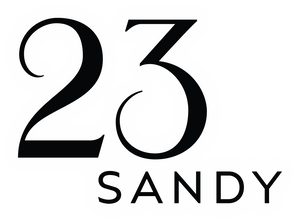| Title | Under the Forest Floor |
| Artist / Creator | Jill Powers |
| Artist's Nationality | United States |
| Place of Publication | Boulder, CO |
| Publication Date | 2021 |
| Process / Technique | Epilog 40 Laser |
| Number of Images | 8 |
| Structure / Binding | Pamphlet stitch, cover wrapper |
| Medium / Materials | Hand made paper, Kozo bark fiber, waxed linen |
| Paper Stock | Heavyweight Nepalese Lokta, Cave Paper walnut dyed flax |
| Number of Pages | Book- 12 pages, + Cover wrapper- 3 sections |
| Dimensions (WxHxD) | 13.25 x 11.25 x 1.7 inches |
| Edition Size | Limited edition of 4 |
| Box / Wrapper | Cover wrapper, Walnut dyed flax paper, Kozo bark fiber design, and laser cut page. Clamshell box |
| Signed & Numbered | Signed & Numbered Edition |
This book explores the unseen process of mycelium growth that takes place under the forest floor and results in fruiting bodies called mushrooms. Each layer of the book reveals a different aspect of that complex natural phenomenon. The laser process used for etching the images in this book singes through the earthy, fibrous, handmade paper, much like how the mycelium hyphae tunnel through the soil to fuse with other hyphae as they reproduce and create new spores. This unseen action of fungi regenerates the soil, and has great promise for restoring the ecological balance of contaminated areas of our planet.
Strong connections help sustain us in tough times. Exploring the mysterious world of fungi has deepened my connection with the natural world, while giving me hope during a challenging year of viral pandemic, climate chaos, and habitat degradation.
While creating this book and learning about the science of mushrooms, I became more aware of how fungi can restore lands damaged by environmental destruction. The explosive growth of wildfires in western states affected my own state of Colorado, where we experienced the worst wildfire season on record in the summer of 2020. One fire actually came within two miles of my family’s home in the mountains. The resulting burn area destroyed more than ten thousand acres of forest. New research has focused on finding ways to use fungi to reduce erosion, build soil structure, and break down the leftover toxic substances that were used to quell firestorms.
Our world needs restoration on many levels. The unseen healing power of fungi, under the forest floor, offers a powerful metaphor for deep connections among people and within the natural world that are needed to restore both our hope in the future and the ecological balance that will help our society and planet thrive.
Strong connections help sustain us in tough times. Exploring the mysterious world of fungi has deepened my connection with the natural world, while giving me hope during a challenging year of viral pandemic, climate chaos, and habitat degradation.
While creating this book and learning about the science of mushrooms, I became more aware of how fungi can restore lands damaged by environmental destruction. The explosive growth of wildfires in western states affected my own state of Colorado, where we experienced the worst wildfire season on record in the summer of 2020. One fire actually came within two miles of my family’s home in the mountains. The resulting burn area destroyed more than ten thousand acres of forest. New research has focused on finding ways to use fungi to reduce erosion, build soil structure, and break down the leftover toxic substances that were used to quell firestorms.
Our world needs restoration on many levels. The unseen healing power of fungi, under the forest floor, offers a powerful metaphor for deep connections among people and within the natural world that are needed to restore both our hope in the future and the ecological balance that will help our society and planet thrive.
Artist Bio
Jill Powers’ art explores the aesthetics and science of biological forms. Her primary art material is Kozo - a sustainably-grown bark fiber. Jill uses ancient papermaking methods for preparing bark fiber, and then develops contemporary techniques for opening and casting the fibers into sculptural and mixed-media forms. Her work bridges art and science by investigating ecological relationships with rich aesthetic possibilities. For a project involving silk cocoons, Jill raised one hundred silkworms in her studio and created collaborative sculpture with them. Jill’s solo exhibition, “Holdfast: Seaweeds in a Time of Oceanic Change” included sculpture, photography, video, and art installations, along with public programs where she partnered with scientists, museums, restaurants, and community eco-organizations. Jill’s artist books have appeared in exhibitions curated by Alicia Bailey and Karen Kunc. They are included in library and museum collections, and often feature Kozo bark fiber, cast pages, sculptural elements, and laser etching. Silk wall panels accompany some of the books to extend the designs into a larger scale with translucent materials. Jill has given public talks and workshops at the Denver Botanical Garden, the Natural History Museum in Boulder, the Honolulu Museum of Art, and the Sitka Center for Art and Ecology in Oregon. Jill writes about contemplative art practices that she developed while teaching visual arts at Naropa University in Boulder, Colorado, 2000-2019. She graduated from Tyler School of Art, and has shown her work internationally. Jill’s art appears in private, corporate, and museum collections.








